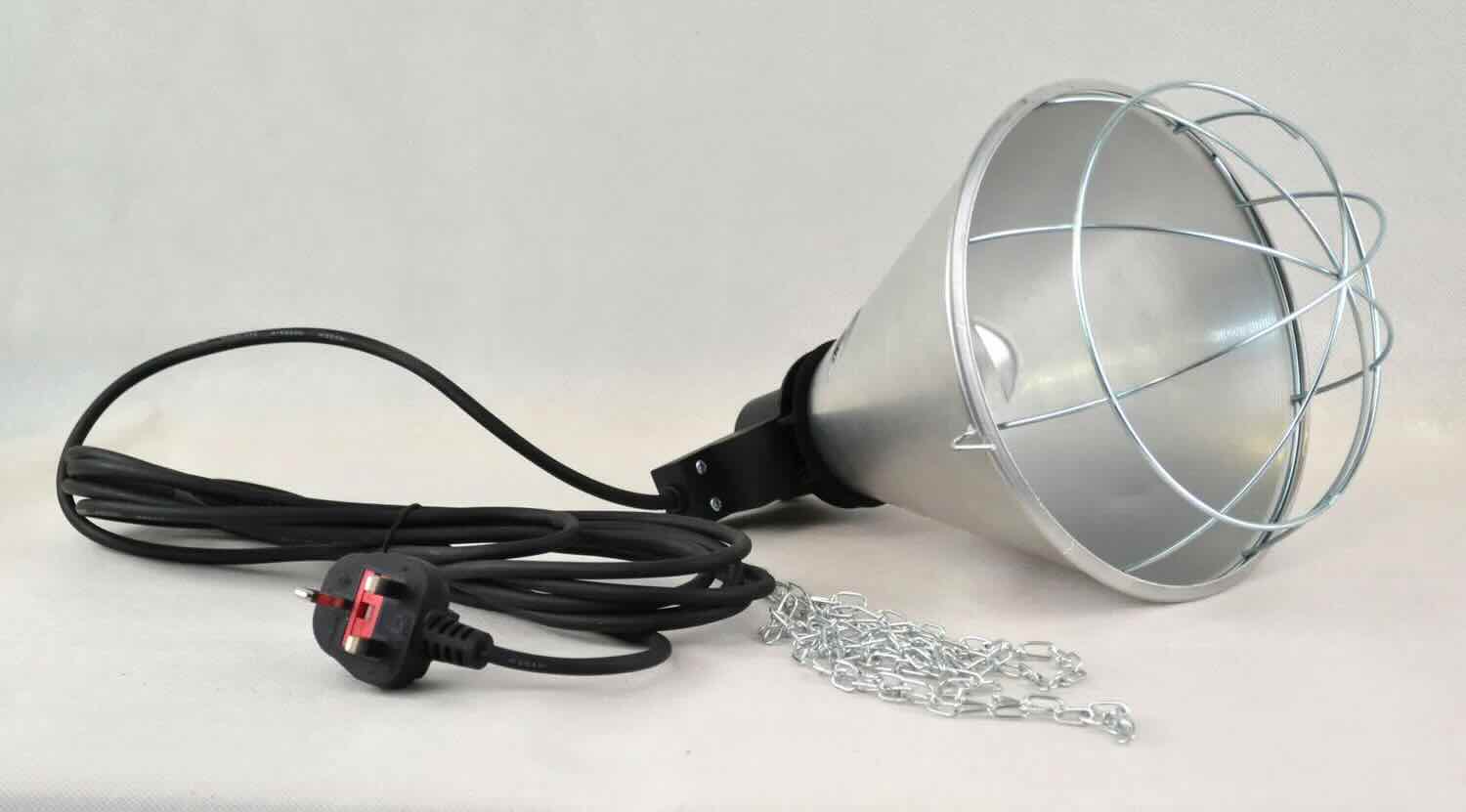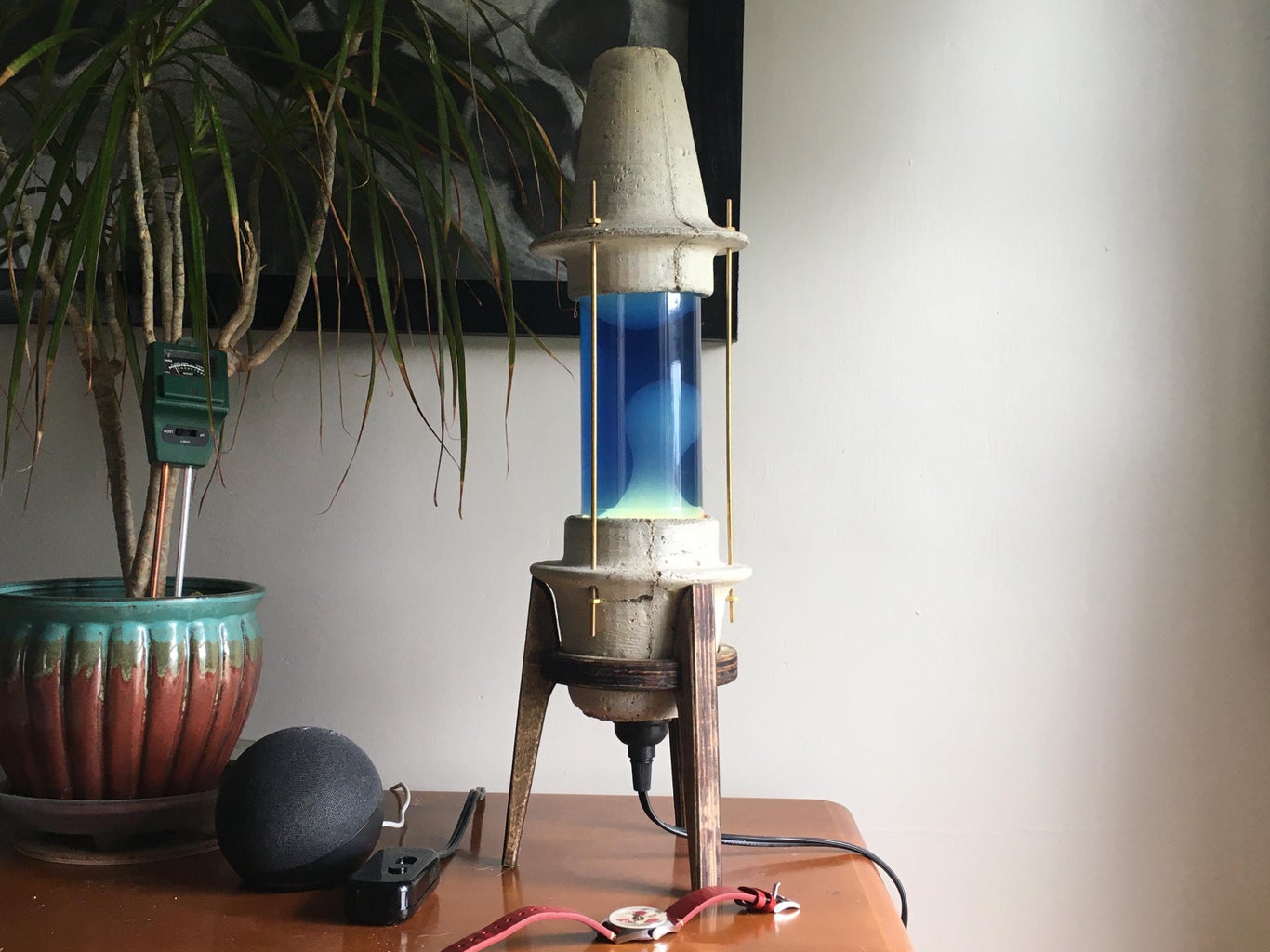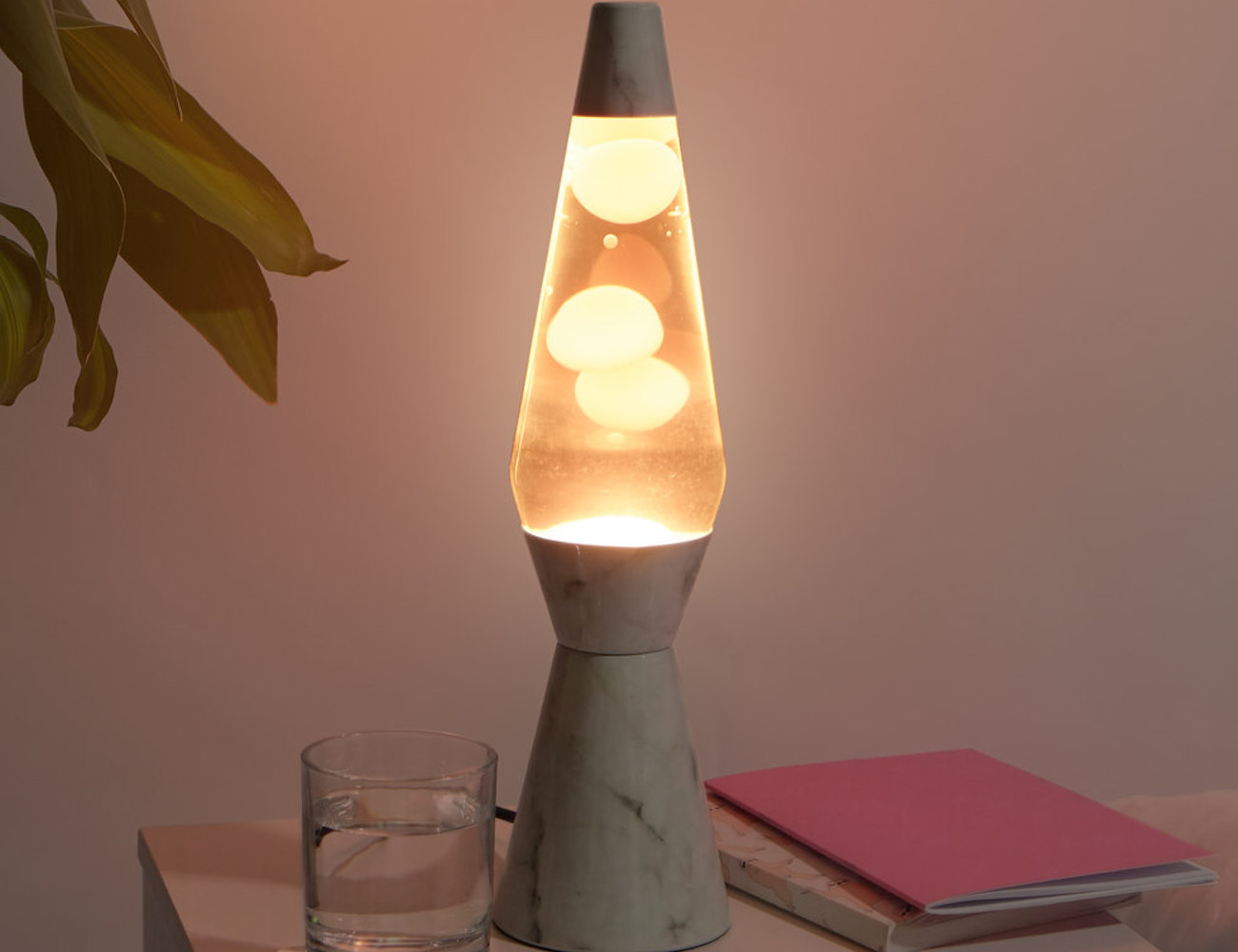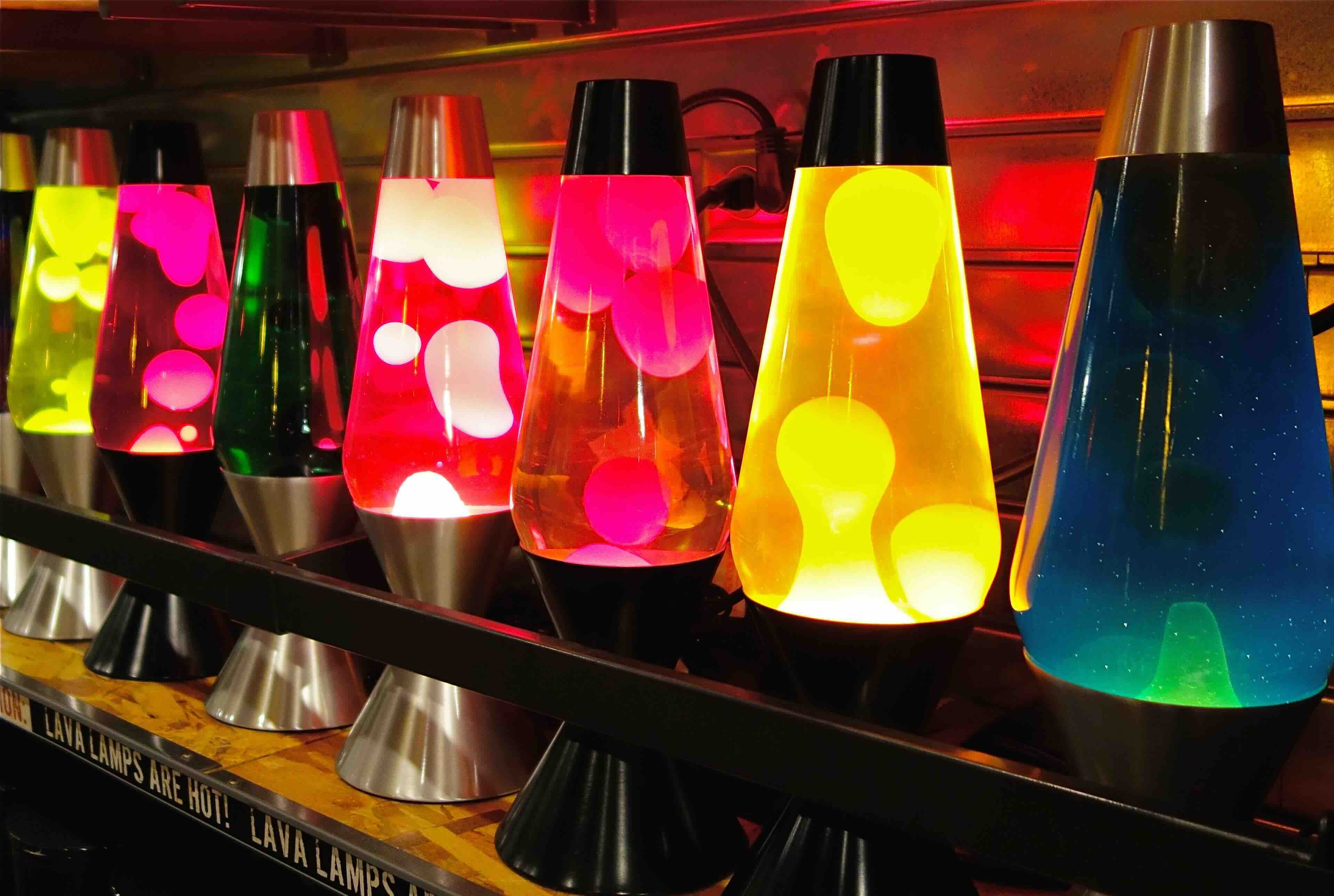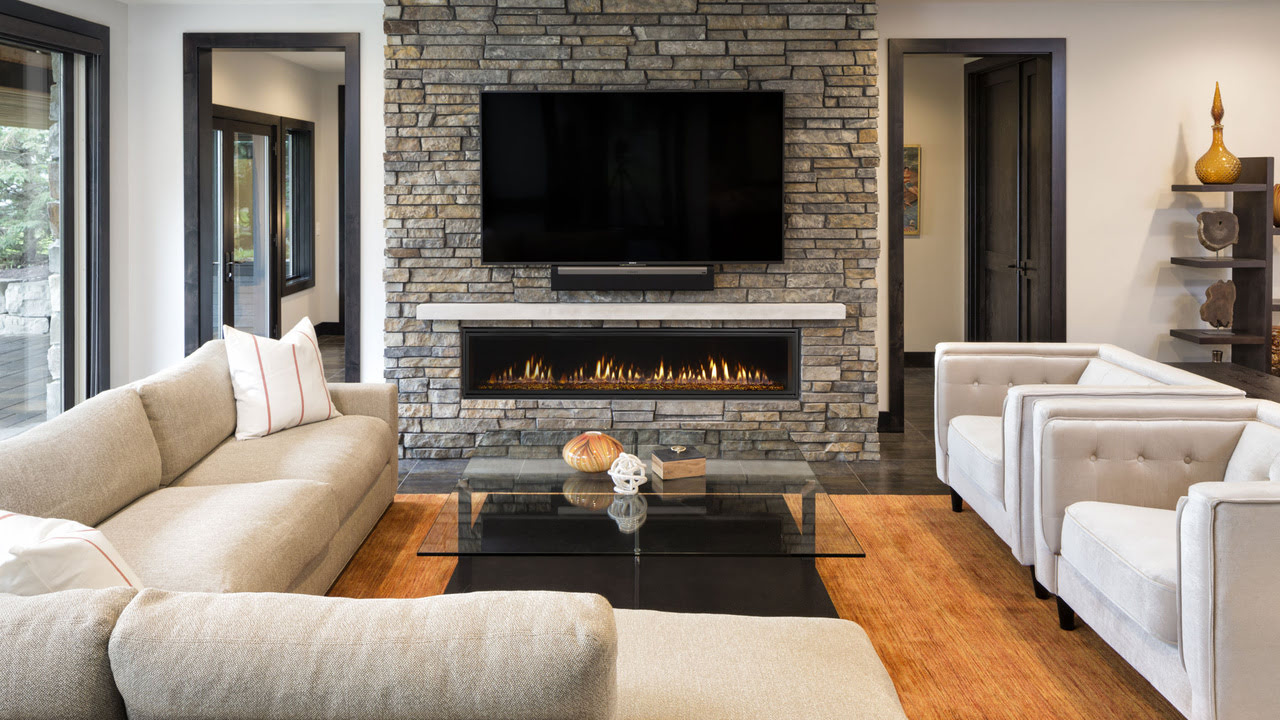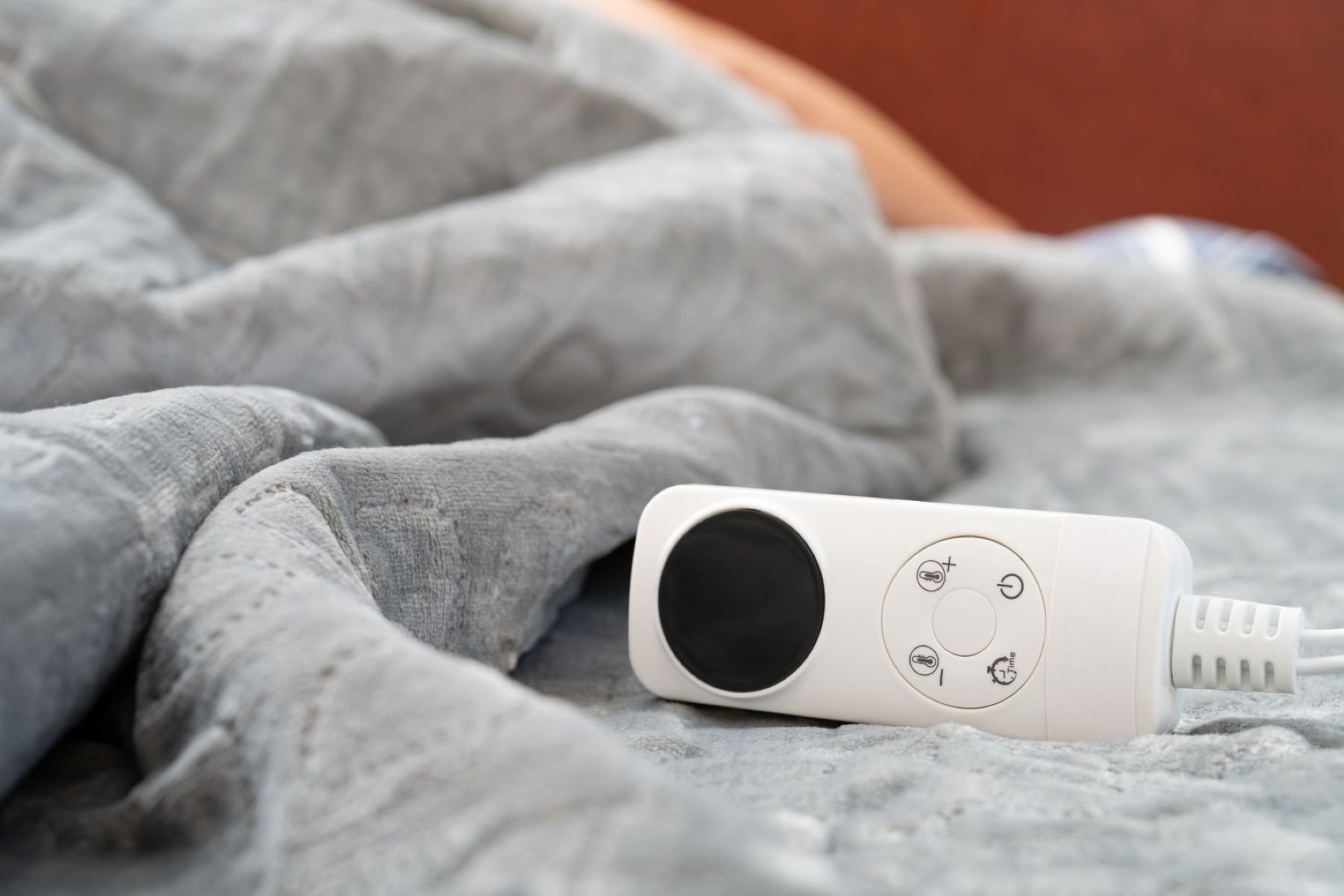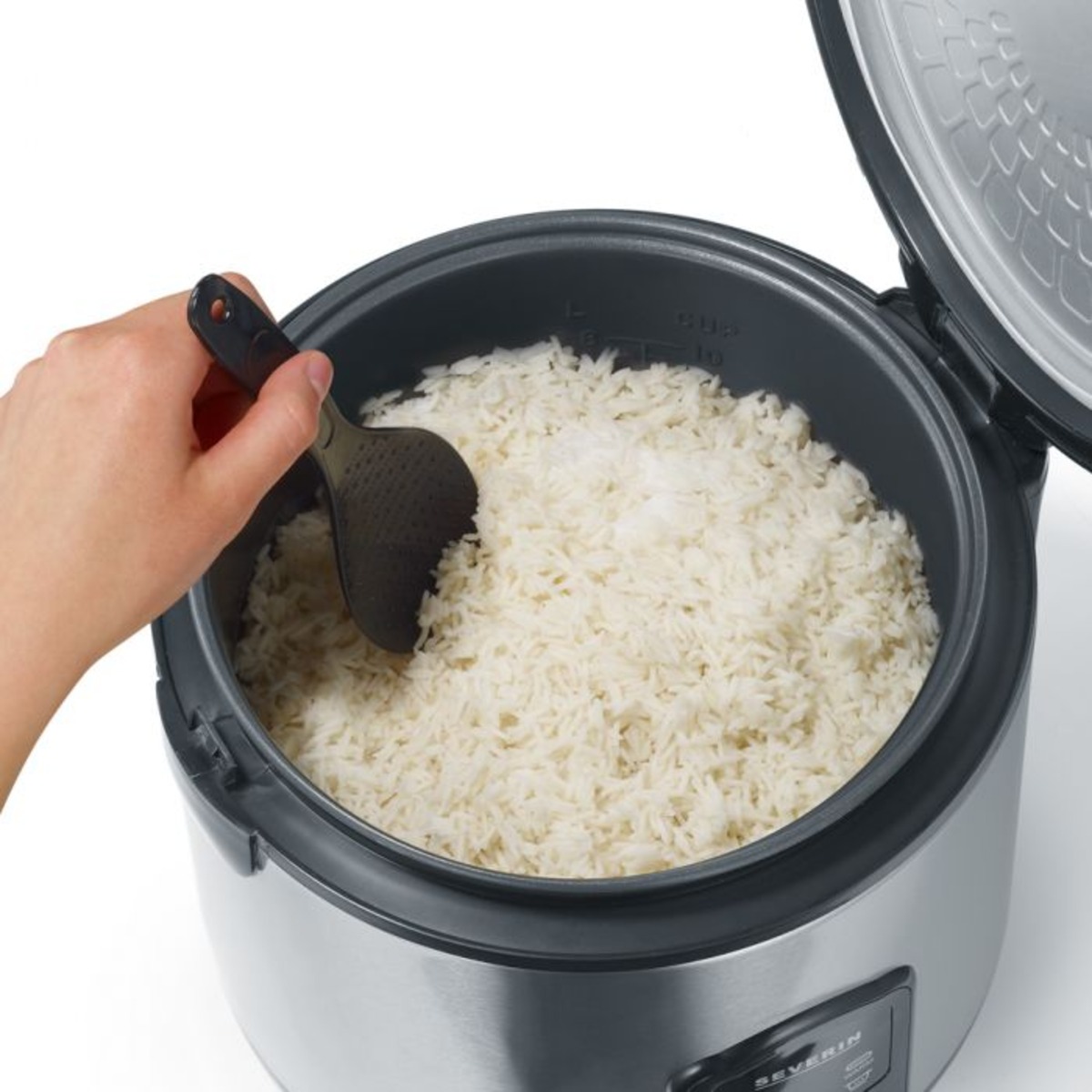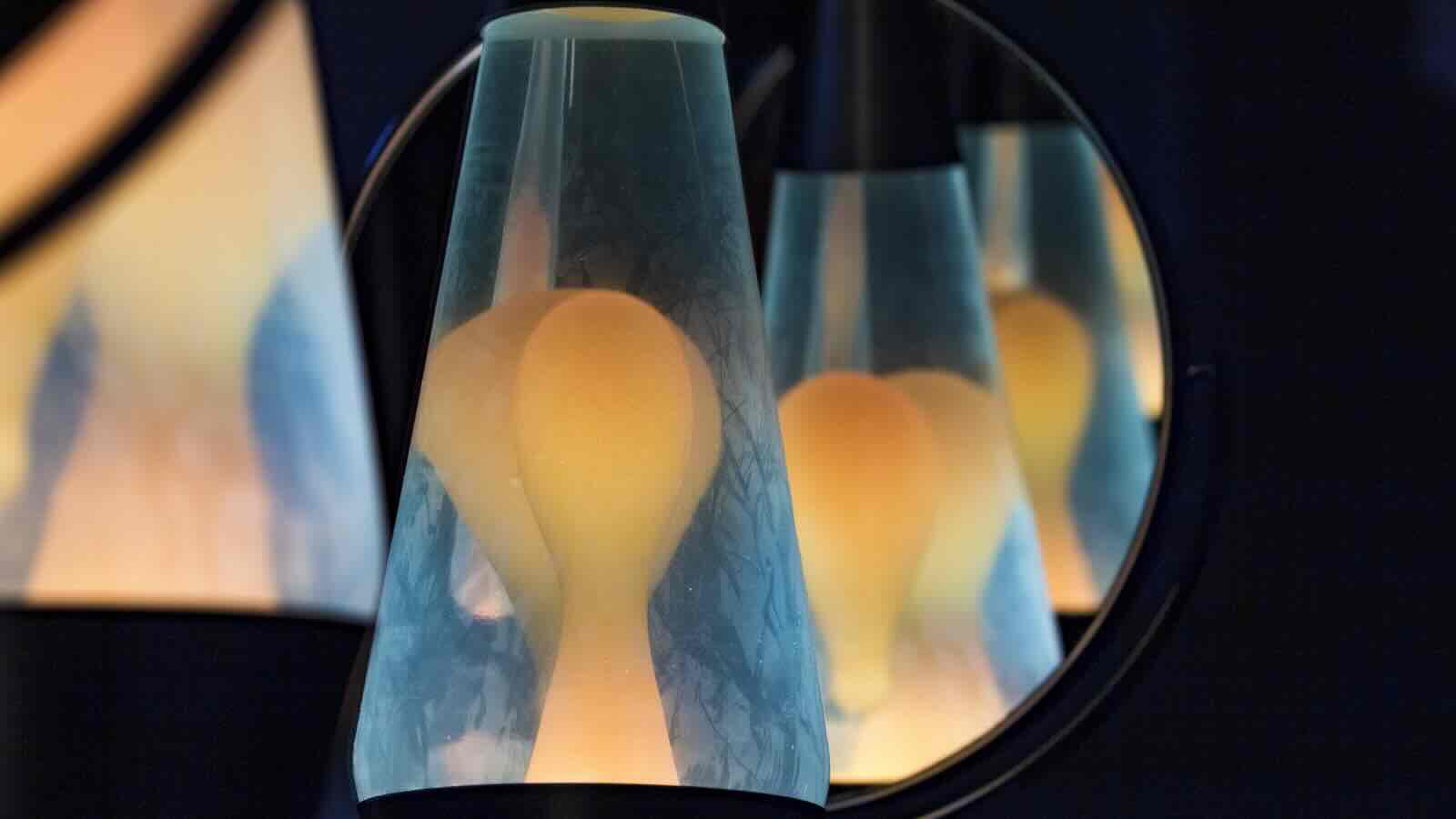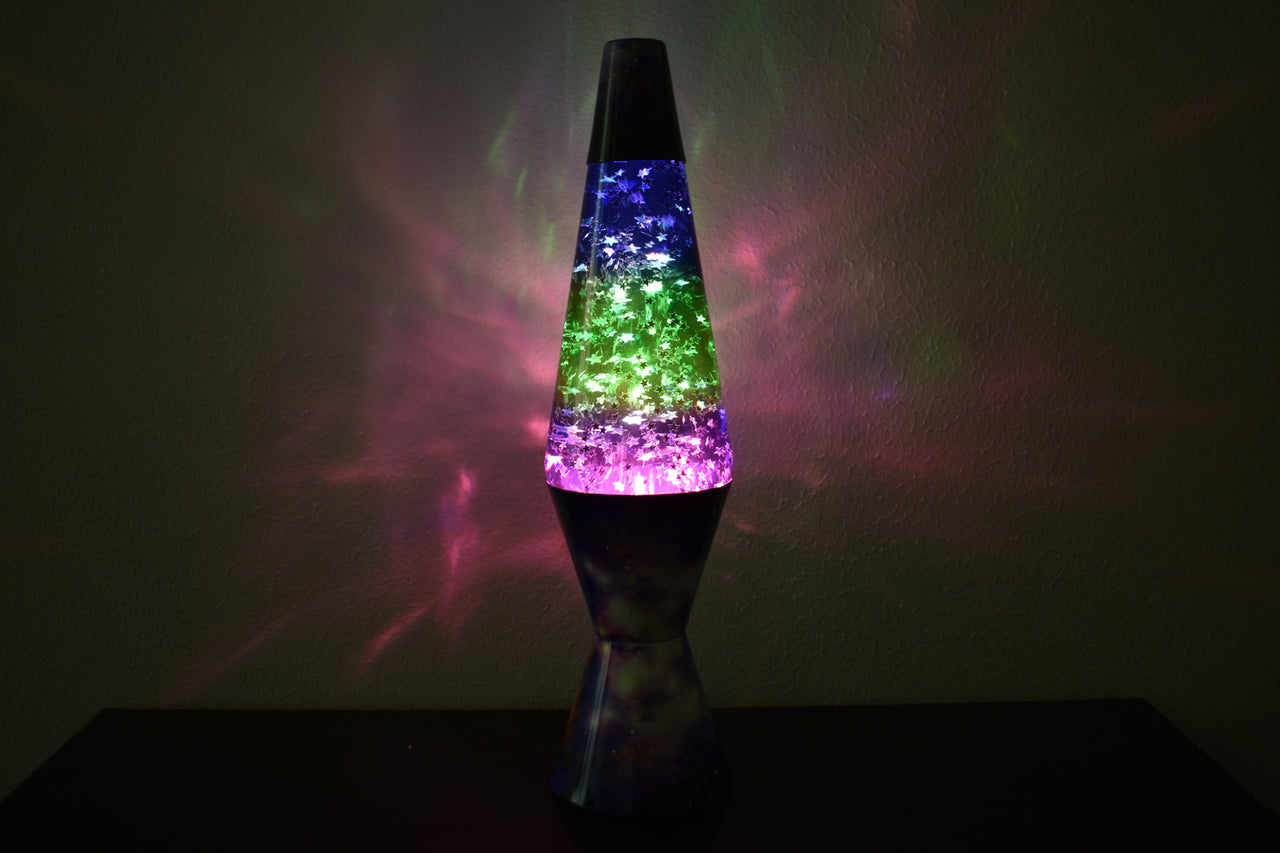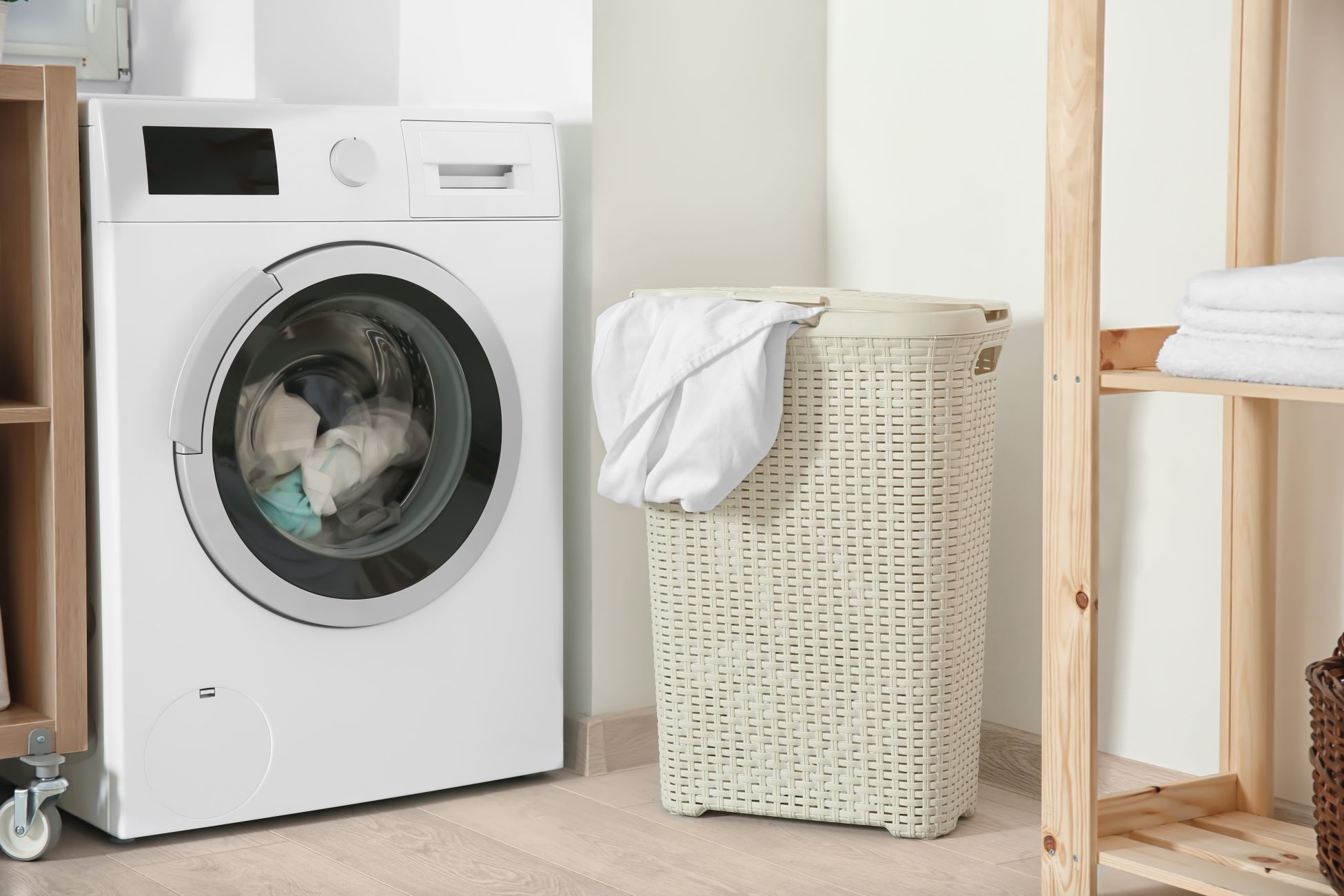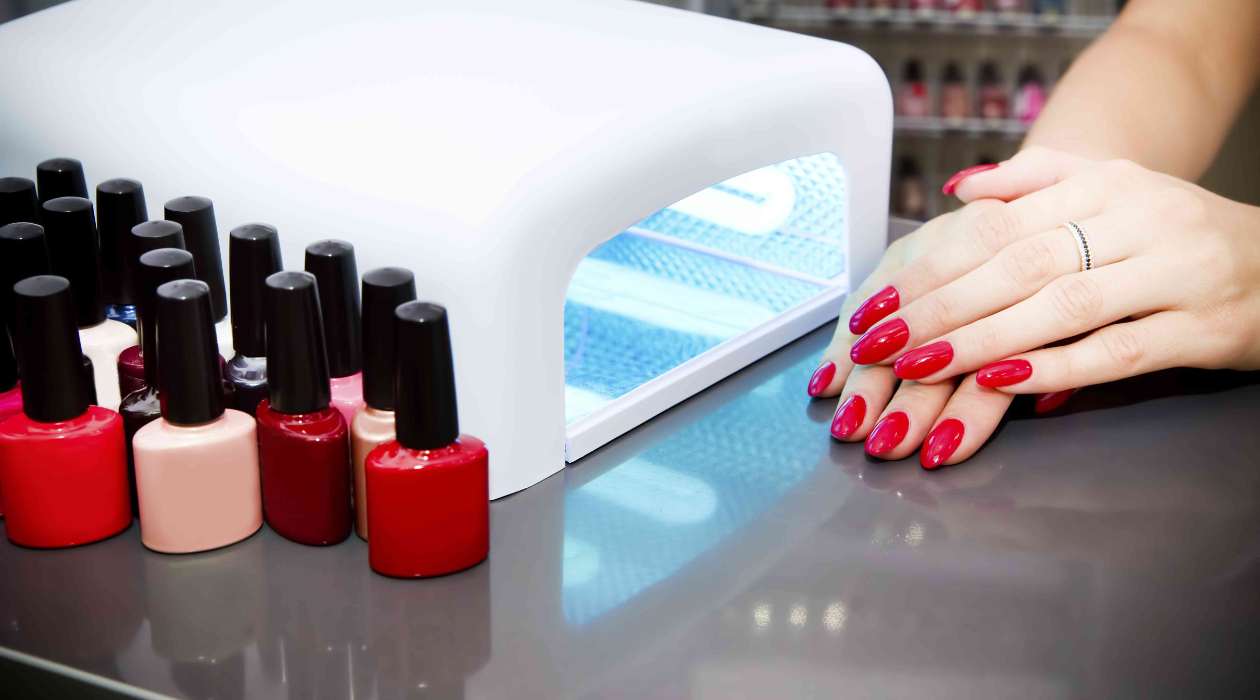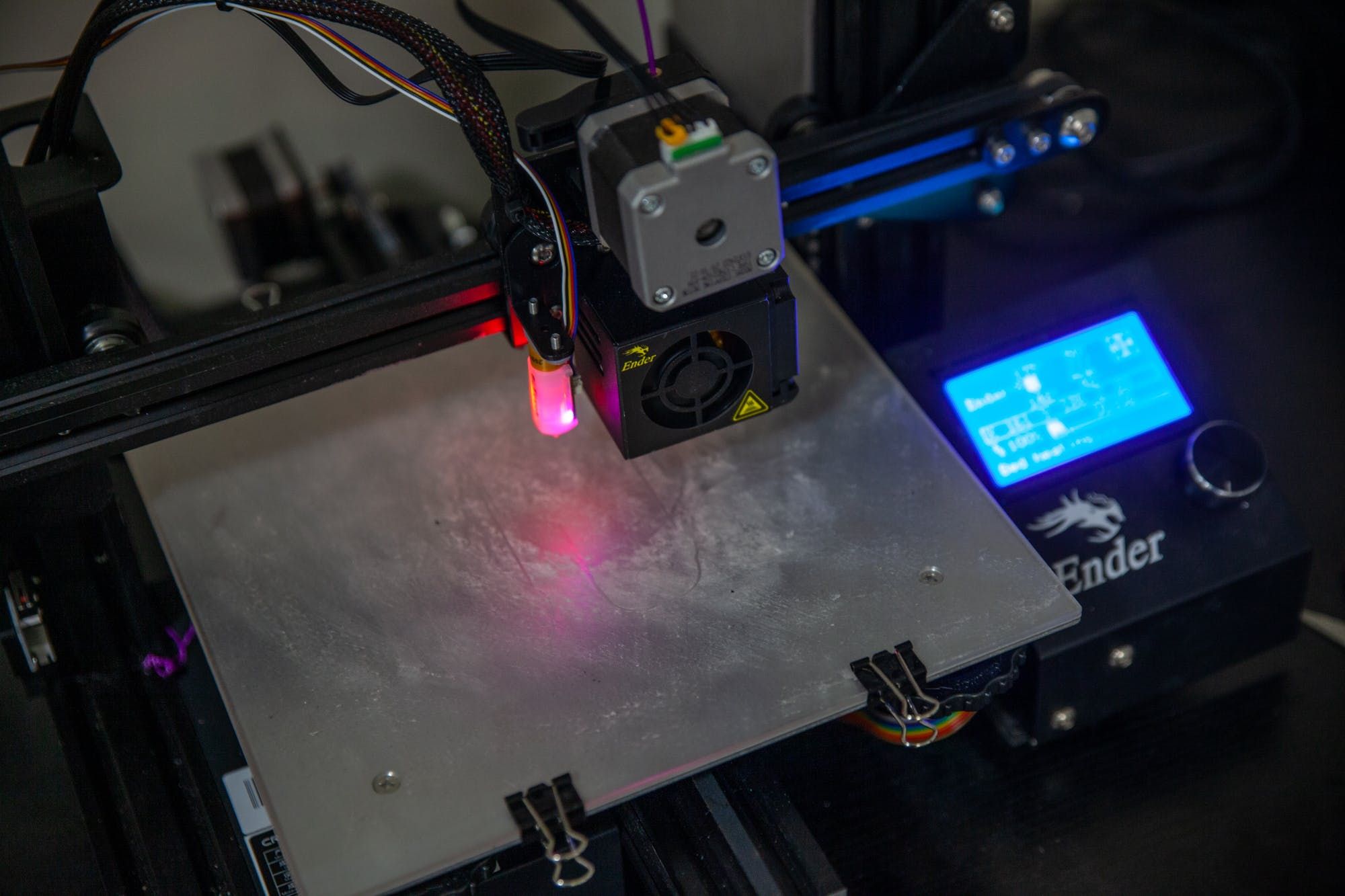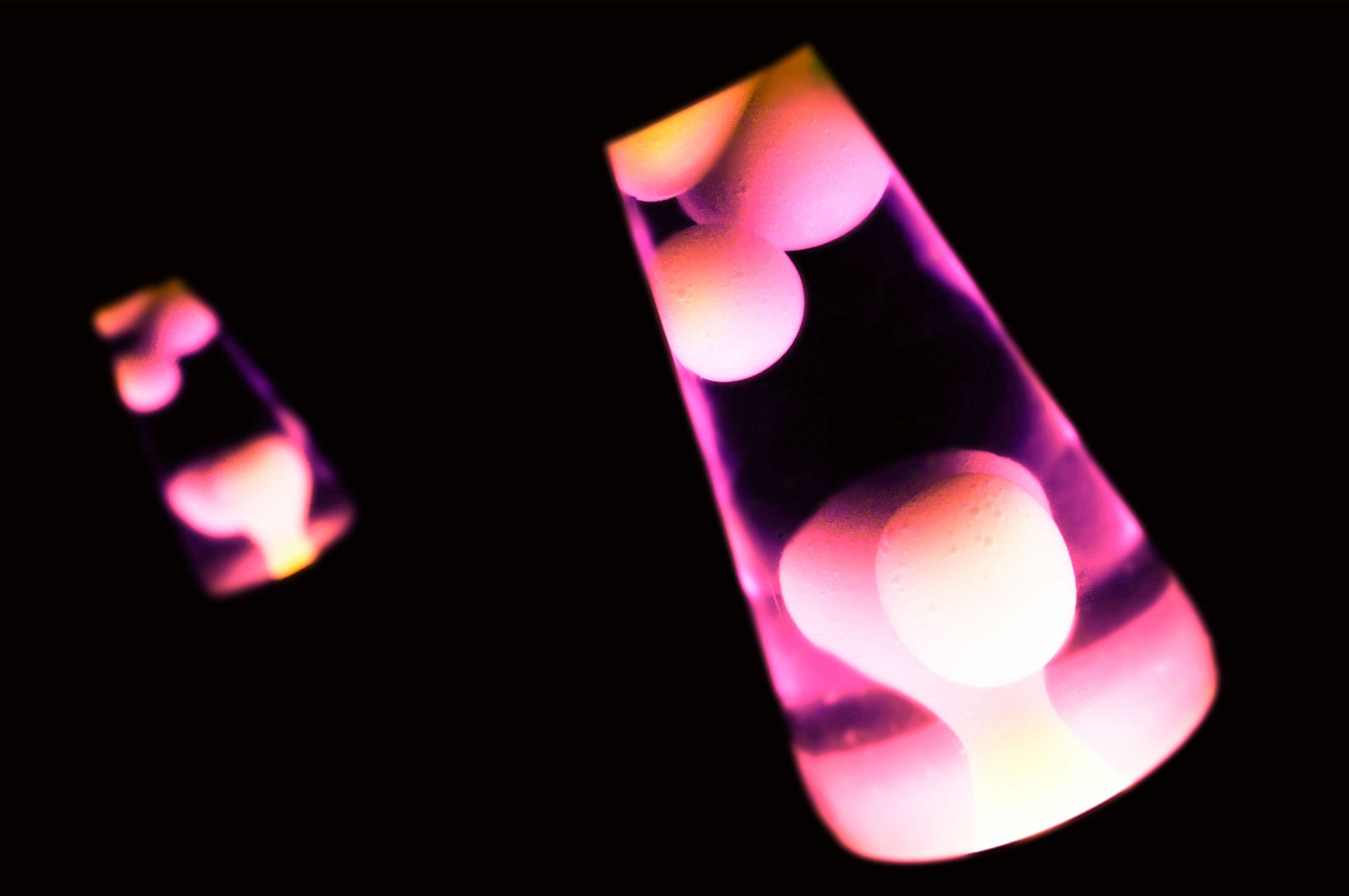

Furniture
How Long Can You Leave Lava Lamp On
Modified: August 16, 2024
Discover how long you can safely leave a lava lamp on without damaging your furniture. Stay worry-free with our expert tips and advice.
(Many of the links in this article redirect to a specific reviewed product. Your purchase of these products through affiliate links helps to generate commission for Storables.com, at no extra cost. Learn more)
Introduction
Welcome to the fascinating world of lava lamps! These unique and mesmerizing decorative pieces have been captivating people’s attention for decades. With their vibrant colors and undulating blobs of liquid, lava lamps add a touch of retro charm to any space. However, if you’re a new lava lamp owner, you might be wondering about the recommended duration of use. How long can you leave a lava lamp on without any negative consequences? In this article, we’ll delve into the details to help you understand more about operating and maintaining your lava lamp.
Before we dive into the specifics, let’s take a moment to understand the inner workings of a lava lamp. The main components of a lava lamp consist of a glass vessel, a base, and a heating element. Inside the glass vessel, there is a mixture of colored wax and a transparent liquid, usually mineral oil. When the lamp is turned on, the heating element warms up the wax, causing it to rise and fall in mesmerizing patterns.
To operate a lava lamp, simply plug it into a power source and turn it on. The heating element will gradually warm up the wax, and within a couple of hours, the lamp will reach its full effect. Lava lamps are designed to create ambient lighting and aesthetic appeal, making them perfect for relaxation or as a conversation starter during gatherings.
With that said, it’s important to note that lava lamps are not designed to be used as a permanent light source or for extended periods of time. The recommended duration of use for a lava lamp is typically around 8 to 10 hours. This ensures that the lamp operates within a safe range and prevents any potential overheating or damage to the lamp.
However, it’s recommended to give your lava lamp a break after 8 to 10 hours of continuous use. This allows the lamp to cool down and prevents any potential risks associated with prolonged operation. You can simply turn your lava lamp off and let it rest for a few hours before turning it back on.
Now that we have a basic understanding of operating a lava lamp and the recommended duration of use, let’s explore some safety precautions to keep in mind while enjoying your lava lamp to the fullest.
Key Takeaways:
- Enjoy the mesmerizing beauty of your lava lamp for 8 to 10 hours at a time to prevent overheating and potential risks, ensuring a safe and captivating experience.
- Prioritize safety by following essential precautions, such as proper placement and regular inspection, to savor the enchanting allure of your lava lamp responsibly.
Read more: How Long Can You Leave A Lamp On
Understanding Lava Lamps
Lava lamps have a unique and interesting history that dates back to their invention in the 1960s. Originally known as Astro Lamps, these funky lighting fixtures gained popularity during the psychedelic era and became an icon of the counterculture movement. Today, they continue to capture the imagination of people of all ages with their mesmerizing lava-like flow.
The key principle behind the functioning of a lava lamp is the interplay between heat and density. The glass vessel is filled with a special liquid, usually mineral oil, which has a higher density than the wax mixture inside. The wax, which is usually a combination of paraffin wax and other chemicals, has a lower density, causing it to rise and fall as it is heated and cooled.
When you turn on a lava lamp, the heating element situated at the base of the lamp starts to warm up the liquid. As the wax mixture is heated, it becomes less dense than the surrounding liquid. This causes it to rise to the top of the lamp, creating those iconic lava-like blobs. As the wax cools, it becomes denser and sinks back down to the bottom of the lamp, only to be heated again and continue the mesmerizing cycle.
One of the factors that contribute to the mesmerizing flow of a lava lamp is the precise combination of the wax’s melting point and the temperature at which the heating element operates. The wax should have a melting point slightly higher than the temperature at which the heating element operates to ensure the desired flow without causing the wax to boil or become overheated.
The choice of colors also plays a significant role in the visual appeal of a lava lamp. Manufacturers often add dyes or pigments to the wax mixture to create a range of vibrant hues. As the wax rises and falls, different layers of colors become visible, adding to the captivating effect of the lamp.
It’s important to note that the flow of the wax in a lava lamp can vary depending on factors such as the room temperature, the quality of the lamp, and the age of the lamp. Newer lamps may require some initial use to reach their optimal flow, while older lamps may develop changes in the flow pattern over time. Each lava lamp has its own unique personality, making it a truly dynamic and ever-changing decorative piece.
Now that we have a deeper understanding of how lava lamps work and the mesmerizing flow they create, let’s explore how to operate them safely while enjoying their magical presence.
Operating a Lava Lamp
Operating a lava lamp is a simple and straightforward process that can bring an instant ambiance to any room. Whether you’re looking to create a relaxing environment or add a touch of retro charm to your space, here’s a step-by-step guide on how to operate your lava lamp:
- Choose a suitable location: Find a stable surface where you can place your lava lamp. Make sure it is away from direct sunlight, excessive heat sources, and drafts.
- Unpack and inspect: Carefully remove your lava lamp from its packaging. Inspect it for any damage or defects before use. If you notice any issues, contact the manufacturer for assistance.
- Position the lamp: Place the lava lamp on a level surface, ensuring that it is fully upright and stable.
- Plug it in: Locate the power cord attached to the base of the lamp. Plug it into a standard electrical outlet.
- Turn it on: Look for the switch or button on the lamp’s base. Turn it on to activate the heating element.
- Wait for the magic: It may take some time for the lava lamp to heat up and start flowing. Be patient and allow approximately 1-2 hours for the wax to reach its fully melted state.
- Enjoy the mesmerizing flow: Once the wax has warmed up, you’ll witness the captivating flow of blobs moving up and down within the lamp. Sit back, relax, and enjoy the mesmerizing display.
- Adjust the lighting: Lava lamps are often used for ambient lighting. If you prefer a softer glow, dim the room lights or place the lava lamp in a more shaded area. Experiment with different lighting settings to create your desired ambiance.
- Turn it off and cool down: After enjoying your lava lamp for a recommended duration of 8 to 10 hours, it’s important to turn it off and let it cool down. This prevents any potential overheating and extends the lifespan of your lamp.
- Clean and maintain: Regularly clean the glass vessel and base of your lava lamp to keep it in optimal condition. Follow the manufacturer’s instructions for proper maintenance and care.
Operating a lava lamp is a delightful and therapeutic experience. Watching the flowing wax is not only visually appealing but also has a calming effect that can help create a relaxing ambiance within your space. Just remember to follow safety precautions and enjoy the mesmerizing magic of your lava lamp responsibly.
The Recommended Duration of Use
While lava lamps are designed to provide hours of mesmerizing entertainment, it’s essential to exercise caution and adhere to the recommended duration of use. Leaving a lava lamp on for too long can lead to potential risks and impact the lifespan of the lamp. Here’s what you need to know about the recommended duration of use:
The general guideline for operating a lava lamp is to limit its use to around 8 to 10 hours at a time. This ensures that the lamp operates within a safe range and does not overheat. By following this recommended duration, you can enjoy the tranquil flow of the lava lamp while minimizing any potential risks.
Leaving a lava lamp on for extended periods can result in the lamp becoming excessively hot. Continuously running the lamp for too long can cause the wax to overheat, potentially leading to changes in its texture and color or even compromising the structural integrity of the lamp.
Overheating the lamp can also increase the risk of electrical issues, such as short circuits or blown fuses. In extreme cases, it can even pose a fire hazard. To prevent any mishaps, it’s important to give your lava lamp a break after 8 to 10 hours of continuous use.
By allowing your lava lamp to cool down for a few hours between uses, you not only ensure its safe operation but also extend its lifespan. Giving the lamp some rest helps maintain the integrity of the heating element and preserves the quality of the wax mixture.
It’s worth noting that the recommended duration of use may vary slightly depending on the specific model and manufacturer. Therefore, always refer to the instruction manual provided with your lava lamp for precise guidelines pertaining to your particular model.
Additionally, if you plan to leave your home or go to sleep, it’s a good practice to turn off your lava lamp to avoid any potential safety hazards. Lava lamps are not intended to be used as a permanent light source and should not be left unattended for extended periods of time.
Remember, the recommended duration of use for a lava lamp is around 8 to 10 hours. It’s crucial to pay attention to this guideline to ensure the safe operation and longevity of your lamp. So sit back, relax, and enjoy the captivating beauty of your lava lamp, knowing that you’re taking the necessary precautions for a worry-free experience.
It is generally recommended to only leave a lava lamp on for 8 to 10 hours at a time to prevent overheating and prolong the life of the lamp. Always follow the manufacturer’s guidelines for safe usage.
Safety Precautions
While lava lamps are a source of visual delight and create a soothing ambiance, it’s important to prioritize safety when operating these mesmerizing fixtures. By following a few simple safety precautions, you can enjoy your lava lamp without any potential risks. Here are some essential guidelines to keep in mind:
- Placement: Choose a stable surface to place your lava lamp, ensuring that it is level and won’t be easily knocked over. Keep it away from the edge of tables or other surfaces where it could be accidentally knocked off.
- Avoid direct sunlight and heat sources: Direct sunlight or exposure to excessive heat can affect the performance and lifespan of your lava lamp. Keep it away from windows, radiators, or other sources of direct heat.
- Keep it away from flammable materials: Lava lamps generate heat, so it’s crucial to keep them away from flammable materials such as curtains, papers, or any other combustible items that could pose a fire hazard.
- Don’t touch the lamp while it’s on: The glass vessel and the base of the lamp can become very hot during operation. Always refrain from touching the lamp while it’s on to avoid burns or injury. Allow sufficient time for the lamp to cool down before handling it.
- Unplug when not in use: When you’re finished using your lava lamp, remember to unplug it from the power source. Leaving it plugged in unnecessarily can increase the risk of electrical issues or accidents.
- Keep away from children and pets: Lava lamps may be captivating to young children and pets, but it’s essential to keep them out of reach. The hot surface and liquid inside the lamp can cause burns or accidental spills, posing a danger to curious little hands or paws.
- Follow manufacturer instructions: Each lava lamp may have specific instructions provided by the manufacturer. It’s important to read and follow these instructions closely to ensure safe installation, operation, and maintenance of your lava lamp.
- Avoid moving the lamp when it’s hot: While it might be tempting to relocate your lava lamp while it’s on, it’s safest to wait until it has fully cooled down. Moving a hot lamp increases the risk of accidents or damage to the lamp itself.
- Regularly inspect the lamp: Take the time to inspect your lava lamp periodically. Check for any signs of damage, frayed cords, or leaks. If you notice any issues, discontinue use and contact the manufacturer for assistance.
- Use a surge protector: For an added layer of protection, consider plugging your lava lamp into a surge protector. This can help prevent any electrical surges or fluctuations from affecting the operation of your lamp.
By following these safety precautions, you can enjoy the beauty of your lava lamp while ensuring the well-being of yourself, your loved ones, and your property. Remember, safety is paramount, and it’s always better to be proactive and cautious when operating any electrical devices in your home.
Read more: How Long Can You Leave A Salt Lamp On?
Potential Risks of Leaving a Lava Lamp On
While lava lamps are generally safe to use when operated correctly and for the recommended duration, there are some potential risks associated with leaving a lava lamp on for extended periods. It’s important to be aware of these risks to ensure the safety of your home and everyone in it. Here are some potential risks to consider:
- Overheating: Leaving a lava lamp on for too long can cause it to overheat. Continuous operation can lead to excessive heat build-up, potentially causing the lamp to become extremely hot to the touch. This can pose a burn risk if you accidentally come into contact with the hot surface.
- Electrical hazards: The longer a lava lamp remains plugged in, the longer the electrical components are in use. Over time, this can increase the risk of electrical hazards such as short circuits, blown fuses, or even electrical fires. It’s essential to give your lava lamp a break to minimize prolonged exposure to electrical currents.
- Changes in wax texture and color: Prolonged operation of a lava lamp can alter the texture and color of the wax. The wax may become too hot, resulting in undesired changes in its consistency, such as becoming too runny or developing clumps. Additionally, the heat can cause the wax color to fade or change, affecting the visual appeal of the lamp.
- Reduced lifespan of the lamp: Continuous use of a lava lamp for extended periods can shorten its overall lifespan. Overheating, prolonged exposure to heat, and excessive use can put additional strain on the heating element and other components of the lamp, potentially leading to premature wear and tear.
- Increased risk of accidents: Leaving a lava lamp on for long durations without supervision increases the risk of accidents. Accidental knocks or bumps can cause the lamp to tip over, resulting in broken glass, spills of hot liquid, and potential injury to those nearby.
- Energy consumption: Operating a lava lamp for extended periods means consuming electricity continuously. This can contribute to higher energy consumption and ultimately result in increased energy costs. It’s important to be mindful of energy usage and consider turning off the lamp when not in use to conserve energy.
To minimize these potential risks, it’s best to adhere to the recommended duration of use for your lava lamp, typically around 8 to 10 hours. This allows the lamp to operate within a safe range and prevents overheating or other issues associated with prolonged use.
Remember, while lava lamps provide an enchanting and relaxing visual experience, it’s essential to prioritize safety and be mindful of the potential risks involved in leaving the lamp on for too long. By following the recommended guidelines and utilizing common sense, you can enjoy the beauty of your lava lamp without compromising the safety of your home or your personal well-being.
The Impact on Lava Lamp Lifespan
The lifespan of a lava lamp can be significantly influenced by how it is used and maintained. Leaving a lava lamp on for extended periods can have both positive and negative effects on its overall longevity. Let’s explore how continuous operation can impact the lifespan of a lava lamp:
Heating Element: The heating element is a critical component of a lava lamp. Continuous operation for prolonged periods can put stress on the heating element, potentially shortening its lifespan. The heat generated by the element can cause wear and tear over time, leading to reduced efficiency and performance. To prolong the lifespan of the heating element, it’s important to give your lava lamp regular breaks and allow it to cool down.
Wax Mixture: The wax mixture inside a lava lamp can also be affected by continuous operation. Overheating due to prolonged use can alter the consistency and flow of the wax. It may become too runny or clumpy, impacting its ability to create the trademark lava lamp effect. Additionally, the prolonged exposure to heat can cause the wax color to fade or change, diminishing the visual appeal of the lamp. By following the recommended duration of use, you can help preserve the integrity and lifespan of the wax mixture.
Electrical Components: Continuous use of a lava lamp means that its electrical components, such as wires and plugs, are in constant operation. This can increase the risk of wear and tear on these components, potentially leading to electrical issues or malfunctions. Regular breaks in operation can help minimize the strain on the electrical components, prolonging their lifespan and ensuring the lamp’s safe and reliable operation.
Glass Vessel: The glass vessel of a lava lamp is where the mesmerizing blob-like flow takes place. Continuous heating and cooling cycles can put stress on the glass, and over time, it may develop cracks or become fragile. Leaving the lamp on for extended periods without breaks can further accelerate the wear and tear on the glass vessel. To extend the lifespan of the glass, it’s important to give your lava lamp sufficient resting periods between uses.
By adhering to the recommended duration of use, allowing your lava lamp to cool down between uses, and following the manufacturer’s guidelines for maintenance, you can help optimize the lifespan of your lava lamp. Regular cleaning, inspecting for any damage, and taking proper care of your lamp can significantly contribute to its longevity.
It’s also worth noting that the lifespan of a lava lamp can vary depending on various factors, including the quality of the lamp, the manufacturer, and how well it is maintained. Investing in a high-quality lava lamp and promptly addressing any issues that may arise can help ensure a longer lifespan for your lamp.
Ultimately, the impact on the lifespan of a lava lamp due to continuous operation can vary. By striking a balance and avoiding prolonged use, you can optimize the lifespan of your lava lamp and continue to enjoy its mesmerizing beauty for years to come.
Conclusion
Lava lamps have a charm that is unparalleled, providing a mesmerizing visual experience that captivates and relaxes. To enjoy your lava lamp to the fullest while ensuring safety and prolonging its lifespan, it’s crucial to adhere to the recommended guidelines for operation. Here’s a summary of what we’ve covered:
Understanding how lava lamps work allows us to appreciate the interplay between heat and density that creates the captivating flow of wax. Operating a lava lamp is a simple process that involves finding a suitable location, plugging it in, and patiently waiting for the wax to warm up and start flowing.
When it comes to the recommended duration of use, it’s best to limit the continuous operation of a lava lamp to around 8 to 10 hours. This ensures safe operation, prevents overheating, and minimizes the risk of potential hazards. It’s crucial to give your lava lamp regular breaks to cool down, preserving both its structure and the quality of the wax mixture.
Operating a lava lamp safely requires taking certain precautions. Choosing an appropriate location, avoiding direct sunlight and heat sources, and keeping the lamp away from flammable materials are essential safety measures to prevent accidents. It’s also important to refrain from touching the lamp when it’s on and to unplug it when not in use.
Leaving a lava lamp on for extended periods can have potential risks, including overheating, electrical hazards, changes in wax texture and color, and reduced lifespan of the lamp. By following the recommended duration of use and being mindful of these risks, you can enjoy your lava lamp while minimizing any negative impact on its lifespan.
Remember, taking care of your lava lamp involves regular inspection, cleaning, and maintenance. By doing so, you can ensure its optimal performance and extend its lifespan. Following the manufacturer’s instructions and using common sense when operating your lava lamp will provide you with a safe and enjoyable experience.
So sit back, relax, and let your lava lamp transport you to a world of mesmerizing beauty. Admire the soothing flow of wax and embrace the calming ambiance it creates. With proper care and responsible use, your lava lamp will continue to bring joy and delight for many years to come.
Curious about enhancing your living space further? After learning about lava lamps, why not discover effective ways to make your living room cozier? Our next piece offers practical lighting tips that transform dull spaces into warm, inviting areas. Interior designers share their top advice to help you achieve a snug and welcoming atmosphere using just light. Perfect for those chilly evenings when all you crave is a little comfort and warmth in your home.
Frequently Asked Questions about How Long Can You Leave Lava Lamp On
Was this page helpful?
At Storables.com, we guarantee accurate and reliable information. Our content, validated by Expert Board Contributors, is crafted following stringent Editorial Policies. We're committed to providing you with well-researched, expert-backed insights for all your informational needs.
